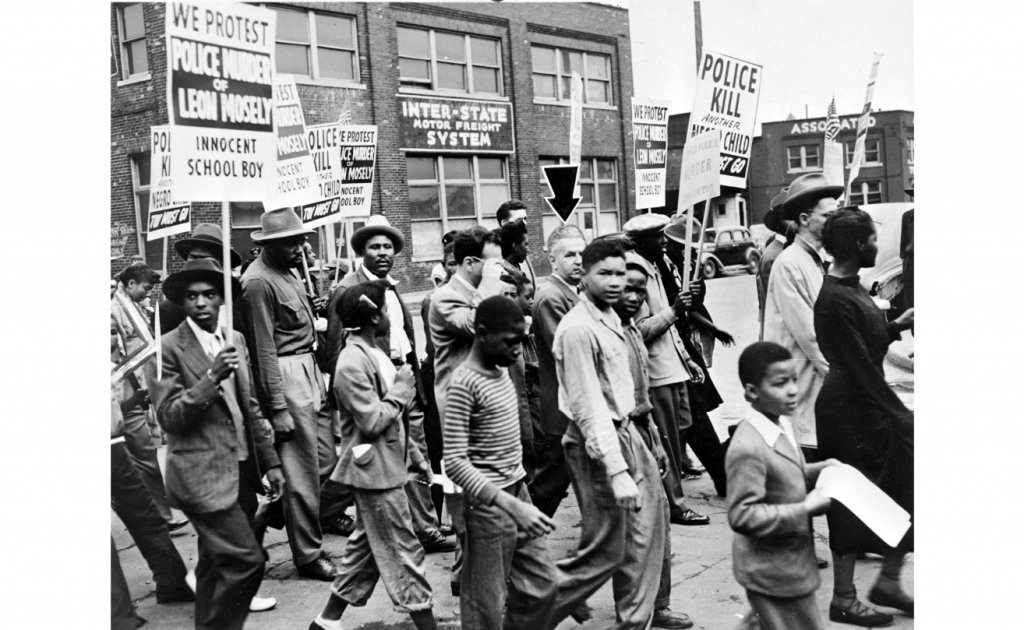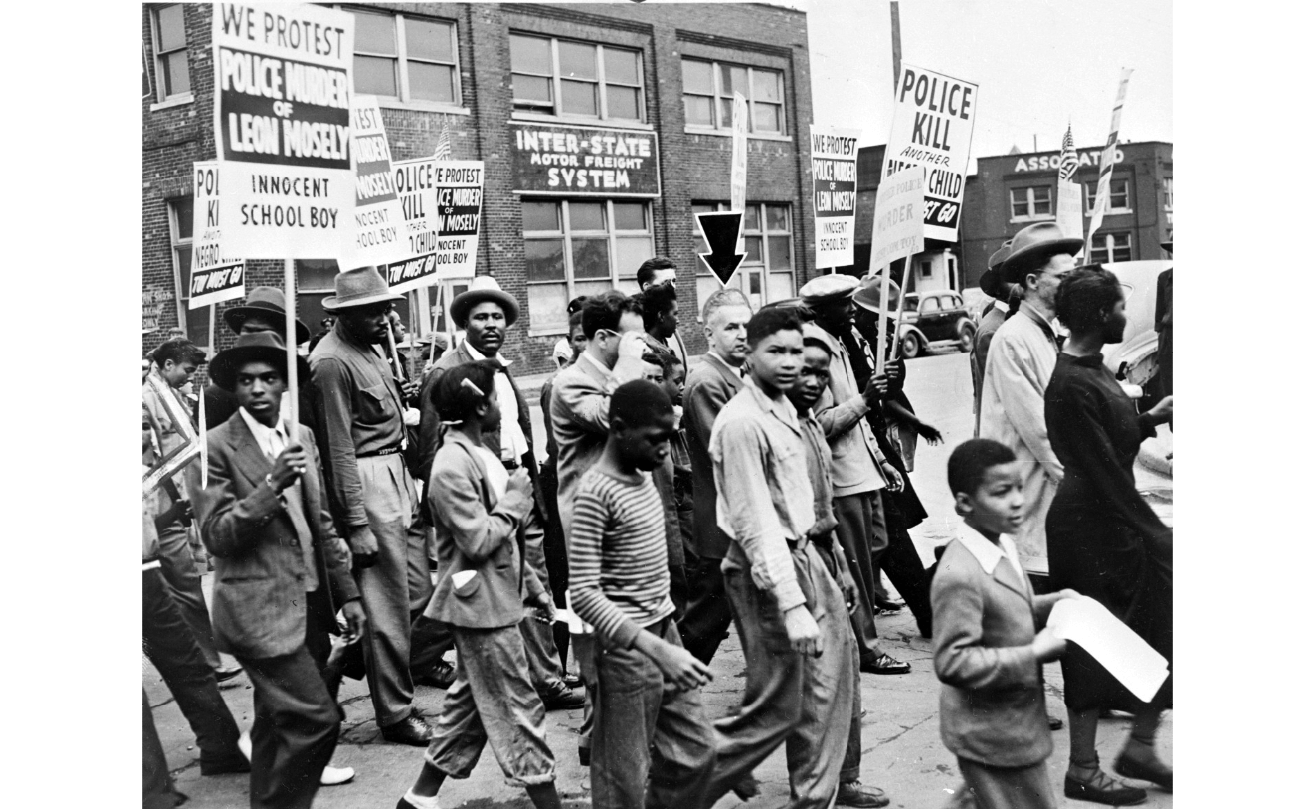Our series of interviews with authors of new books in labor and working-class history continues with Ryan Pettengill, author of the new book, Communists and Community: Activism in Detroit’s Labor Movement, 1941-1956, published by Temple University Press this year. Pettengill teaches at Mountain View College.
Your book focuses on communist community activism in Detroit in the period from World War II through 1956. Why is a focus on community so important to understanding Detroit’s communist efforts to secure social justice in this period?

I was always frustrated with studies that made the issue of American communism so cut and dry. As I was finishing my dissertation, Red Chicago was published. That book made a very similar case for Chicago as I was making for Detroit when it came to communism at the local level. Of course, Red Chicago is primarily focused on the early Depression years whereas Communists and Community examines the war years and beyond. As I continued to research the topic, it became very clear to me that the activism Detroit’s Communists sponsored in the Popular Front era did not go as cleanly nor as seamlessly as other scholars have made it seem. At a local level, Popular Front-styled activism not only continued with Communists reaching out to potential allies in civic, racial, and ethnic groups, but in ways their activism even expanded. It was in the aftermath of World War II that the “labor schools” were launched in Detroit and it was in the postwar period that Communist leaders, like Carl Winter, began to step up their efforts to put the spotlight on how the Detroit Police Department conducted its business.
Your examination of the post-war period demonstrates the continued work of communist organizers to address issues in the community. Why do you think so little has been written about this activism? What were some of the most interesting examples and findings that you uncovered?
The short answer is primary documents that chronicle a sustained effort of community activism are hard to find. Libraries and archives, such as the Walter P. Reuther Library at Wayne State University, have robust collections of the bureaucratic operations of unions like the UAW. They also have oral history collections and every once and a while, you can pick up some ideas as they relate to what the unions may have been up to throughout the community. For me, the game-changer came about five years ago as I was listening to a radio show on Sirius Progress. The host, Michaelangelo Singuerelli, was discussing the clear civil rights violations by law enforcement officials who were trying to root out religious extremists in places like New York City. I thought to myself “I bet the Detroit Red Squad was up to similar things in the Cold War era.” Turns out, they were!

The Detroit Red Squad, the special unit of the Detroit Police Department dedicated to addressing communist agitators, kept copious notes and issued detailed memos as to the activities of individuals suspected of either belonging to the Communist Party or having some loose affiliation with it. In Detroit, two of the more prominent individuals were Carl Winter and his wife, Helen Alison-Winter. Several years ago, Michele Artt, their daughter, donated papers to the Tamiment Library at NYU. The Winter Family Papers Collection is teaming with Red Squad “memos” that detail where leftists held meetings, what was discussed at these meetings, and who attended them. When I say “detailed,” I mean they were actually doing things like noting the racial composition of these meetings and recording license plates in adjacent parking lots. More importantly for my purposes, these memos gave me a much better understanding of where, why, and how the CP launched some of their initiatives that were grounded in local concerns and enveloped in causes involving social justice. In this way, I learned about Yemens Hall, Schiller Hall, and the Workingmens Cooperative Restaurant. I further learned of some of the ways in which the CP was reaching out to the community in an attempt to address concerns facing the working-class “community” in Detroit.
Obviously, I focused on the war years and the immediate postwar period. But the holdings at the Tamiment are robust and topics that relate to community activism extend well into the 1960s for centers like Detroit and beyond. And NYU is not the only place that has made these materials available. I also found a lot of good stuff at the Bentley Collection at the University of Michigan in Ann Arbor.
You argue that the nature of progressivism within the UAW changed in the 1950s. How did the change affect its approach to social justice? What implications did the shift have on the lives of Detroit’s working class?
By 1941, the UAW had demonstrated it was committed to working-class racial equality both inside the plants as well as throughout the community. The Communists were a big factor in that commitment. But part of that commitment revolved around the fact that the union was supported by the community and, in many ways, was nurtured by it in the early years of the UAW. By the early 1950s, “the community” was far less of a central factor for the union. Collective bargaining had replaced the community-based activism that had forced General Motors, Chrysler and Ford to recognize the UAW. In ways, I see this development within the union similar to the postwar liberal notion of addressing inequality through full employment. A job and purchasing power would eventually break the back of Jim Crow. Maybe it would have but as Daniel Clark has demonstrated, the postwar job market in centers like Detroit was anything but predictable.

Similar to other scholars, I see the UAW as a “progressive” union dedicated to the betterment of all its members regardless of race, gender, or ethnicity. But given its gravitation to collective bargaining and the massive challenge of addressing the fluctuating economic circumstances of the market, the UAW became less and less responsive to the challenges faced by working Detroiters at the community level. The niche that the Communists filled, before the Second Red Scare, was addressing the “everyday” challenges that occurred outside the workplace – segregation in housing markets, policing reform, or economic justice. When the Red Scare hit its stride, the people who were most passionate about these issues and best equipped to address them, were forced underground. As for the implications for working Detroiters, with the Communists driven from the ranks of the union and, in many instances, under threat of indictment, the UAW became the primary guardian of “working-class welfare” in Detroit. Given its commitment to collective bargaining, social justice became an afterthought. At best, the purchasing power that had been won by the UAW through effective contracts became an inadvertent avenue for pursuing social justice.
What are the most important lessons of the story you tell for labor today?
This is going to sound like I’m wandering off on some sort of tangent but shortly after reading Hurry Up Please, It’s Time, Elizabeth Hawes became my favorite person in my book. Her love of unions was both endearing and inspiring to me. There is a part in that book when she talks about how when “the people” get together and get organized, there is nothing they cannot accomplish. I think that was a central lesson those old lefties wanted to leave for us. Bringing racism and its connections to policing in Detroit into a public focus helped to reform law enforcement in the city. Bringing people together in the annual New Year’s Eve party, helped Detroit’s Communists demonstrate that working people from different walks of life had much more in common than set them apart. Given the political circumstances that we Americans find ourselves in today, I think the lesson left by Hawes and many of her “non-red baiters” is very timely.
Now that your book is published, what books are you looking forward to read?
I’ve been spending a lot of time thinking about the history of human rights. I just finished Samuel Moyn’s The Last Utopia: Human Rights in History and Not Enough: Human Rights in an Unequal World and Mark Philip Bradley’s The World Reimagined: Americans and Human Rights in the Twentieth Century. On my “to-do” list are Sarah Snyder’s Human Rights Activism and the End of the Cold War, Aryeh Neier’s The International Human Rights Movement: A History, and Geraldine Kidd’s Eleanor Roosevelt: Palestine, Israel, and Human Rights







